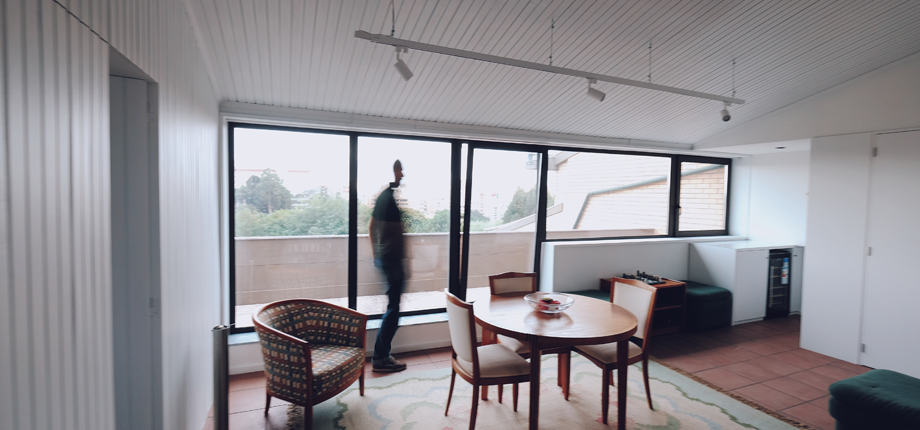An American engineer and professor by the name of William Edwards Deming once said, “Innovation comes from the producer – not the customer.” When it comes to the window industry I couldn’t agree more.
After all, what is the incentive for the customer to seek an alternative to a tried, tested and familiar products – and in this context I mean UPVC and aluminium windows – when those products do exactly what is required of them: they let light in, enable those inside to see out and provide an adequate level of security.

However innovation, like evolution, plays a key role in not only enabling us to adapt to the constant changes and demands of a continually changing world, but also pre-empting those changes and demands by developing products and services that significantly improve the lives of those who use them.
The launch of Boavista, Europe’s first full range of fibreglass window frames that set new industry standards in sustainability, durability and performance, is a perfect example of this.
It is also a move that I believe has the potential to disrupt the current window supply and install model by providing a credible alternative to plastic and aluminium. An alternative that offers those who choose them the opportunity to contribute towards reducing the UK’s carbon footprint without compromising on design, function or form.
In fibreglass window frames I believe that the window revolution has arrived, and here’s why.
A green window of opportunity
From a sustainability standpoint fibreglass is far superior than its PVC and aluminium counterparts due to its reliance on silica, which is naturally found in abundance, for its production compared with the fossil fuels used to make PVC windows - a resource that is both heavily polluting and finite.
A Trend Monitor report, entitled Five Key Trends which will impact on the UK home improvement industry in 2016, highlighted how the millennial consumer now looks beyond the cost of a purchase, and is more inclined to favour products that are based on a circular business model, use a minimal amount of the earth’s valuable resources and that are manufactured in a such a way that designs out waste throughout the lifecycle of the product. Whilst we are now firmly in 2017 I only see this attitude becoming even more prominent.
Using the latest in pultrusion technology, fibreglass frames are created by pulling resin-soaked glass fibres through heated dies, which only consumes 0.07 kilowatt to produce a linear metre of window frame weighing approximately 1kg.
At the point whereby the windows need replacing, they can simply be shredded into sections and then mixed with concrete and asphalt to deliver a lightweight, stronger and crack and shrinkage-resistant composite material – a process that requires very low energy to carry out.
Designing out compromise
In terms of design, fibreglass opens up a world of possibilities due to its strength and stability, which enable it to hold large surface areas of glass, bypassing the need to produce and fit specialist, structural glass.
From the perspective of an architect or homeowner, fibreglass frames support more adventurous designs that would previously have been prohibitive due to the cost associated with incorporating bespoke glazing solutions. Not only that, but fibreglass also expands in line with window glass, removing the need for unsightly gaskets to hold the pane in place, adding aesthetic value to a building.
Perhaps one of the most striking features of a fibreglass frame is that, despite weighing half that of aluminium, it is exceptionally hardwearing, highly rot and corrosion resistant and delivers a much longer lifecycle than PVC and aluminium.
In fact it is these factors that have underpinned the material’s success in parts of Europe and Canada, countries that were quick to harness the power of fibreglass to counteract the weather-related erosion that window frames in coastal regions and harsh climates are subject to. We only have to walk down the high street of any coastal town to spot evidence of decay brought about by the continual blowing of sand and the high salt content found within sea air.
Reducing the maintenance associated with repainting – or even replacing – windows in these parts of the UK would not only cut costs but also enhance the local environments, removing the sense of decline that some coastal towns, through no fault of their own, sometimes convey.
Futureproofing the UK
The case for fibreglass is not exclusive to coastal towns or highly designed residential properties or office blocks. It also applies to the UK’s housing market.
A House of Lords report created by the Select Committee on Economic Affairs entitled Building More Homes concluded that the government’s target of one million new homes by 2020 will not be enough. More importantly, it put forward the case that in order to address the housing crisis, at least 300,000 new homes are needed annually for the foreseeable future.
This is by no means an insignificant amount. If we are to meet this target then the annual window footprint alone would be considerable and the volume of plastic and aluminium required quite daunting.
Given the renewed focus on sustainability, not just by millennials but also by society as a whole, which is made even more urgent by government targets that seek to reduce the UK’s carbon footprint, isn’t it time that the industry embraced new approaches to window frames and considered the role it plays in contributing towards delivering sustainable environments?
The technology exists. The challenge now is overcoming the UK’s inherent resistance to change by making fibreglass windows a standard component within the built environment in order to improve the sustainability credentials of today’s buildings whilst helping to shape those of tomorrow.
For more information visit www.boavistawindows.co.uk or contact 01252 415173.
- Log in to post comments













